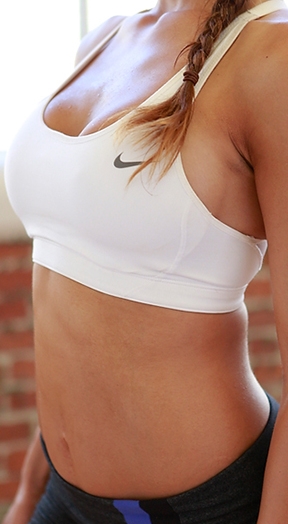Many patients may not realize that certain cosmetic surgical procedures are more involved than others. For example, there is a great deal of difference between having dermal injections to reduce lines and wrinkles on the face and having a tummy tuck procedure. Dermal injections are done with a very fine needle using local anesthetic only in specific targeted areas. On the other hand, a tummy tuck is a major medical procedure that usually requires general anesthesia and an incision that runs from one hipbone across to the other. Furthermore, a tummy tuck procedure will also include insertion of surgical drains that will stay in place following the surgery. Dr. John Griffin believes it is important for patients considering a tummy tuck to understand how to properly care for these surgical drains.
The Tummy Tuck Surgical Procedure
A tummy tuck surgical procedure is done using either general or twilight anesthesia (in which the patient is sedated but still conscious). A horizontal incision is made across the lower abdomen from one hipbone across to the other. The abdominal skin and underlying tissue are then pulled tight, and excess skin and tissue are then removed. Several surgical drains are then inserted, and the remaining skin and tissue are sutured back into place.
Why Are Surgical Drains Necessary?
As with any major surgical procedure, blood and other fluids will accumulate in the incision area following a tummy tuck. The surgical drains, which consist of surgical tubing leading out of the body, along with a small bulb at the end of each tube, are designed to remove the excess fluids, thereby shortening the healing time. Depending on the amount of fluid collected in the drains, they will generally be removed anywhere from one to three weeks following the surgery.
Securing the Surgical Drains
The surgical drains will come with a small plastic tab with a hole. This will allow the patient to pin the drains to clothing, compression garments, or a makeshift gauze belt. Securing the drains prevents them from shifting around too much and causing discomfort.
Tracking Fluid in Surgical Drains
Patients should track the amount of fluid that collects in the surgical drains. This will help Dr. Griffin determine when the drains can be removed, as well as if the body is healing properly. Patients should measure the amount of fluid that collects in the drains several times a day. The best way to do this is to empty the fluid into a measuring cup, chart the amount of fluid, then discard the fluid down the drain. The bulbs should be squeezed once the fluid has been removed in order to establish negative pressure, which will prevent leakage.
Showering with Surgical Drains
The key is to be very gentle when cleaning around the area of the surgical drains. Use antibacterial soap and fragrance-free shampoo and conditioner if at all possible. Only use a fresh washcloth to clean around the drains. Washcloths can pick up germs after as few as two or three uses.
It may seem to be a tremendous hardship to deal with surgical drains following a tummy tuck procedure. However, the reward will come once the drains have been removed and patients are closer to the flat stomach they desire.
To schedule a tummy tuck consultation, contact Dr. John Griffin’s practice.





